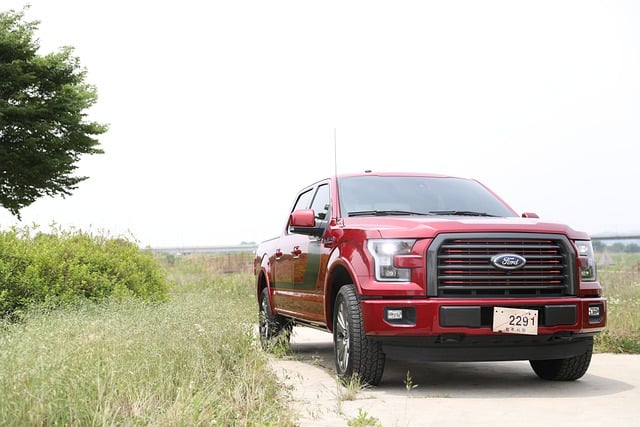Maintaining a reliable and efficient power source in your truck is paramount for both daily operation and long-term reliability. With the right truck battery, installation can significantly enhance your vehicle’s performance. This article meticulously outlines the top seven tips for truck battery installation, ensuring you select the optimal battery for your needs, adhere to safety protocols, and correctly install it for peak efficiency. From understanding your truck’s specific battery requirements to a detailed post-installation checklist, each step is covered to guarantee your electrical system operates at its best. Embark on this guide to ensure your truck’s battery installation is done right the first time.
- Understanding Your Truck's Battery Requirements: A Comprehensive Guide to Selection
- Preparing for Installation: Safety Precautions and Tool Checklist for Truck Battery Replacement
- Step-by-Step: Proper Techniques for Removing the Old Truck Battery
- The Right Way to Position and Install Your New Truck Battery
- Connecting the Battery Cables Correctly: A Step-by-Step Wiring Guide for Trucks
- Finalizing the Installation: Securing the Battery, Adding Fluid if Needed, and Conducting a Test Drive
Understanding Your Truck's Battery Requirements: A Comprehensive Guide to Selection

When addressing your truck’s battery requirements, it’s crucial to select a battery that is well-suited for its make and model. The right truck battery not only ensures optimal performance but also plays a pivotal role in the longevity of your vehicle’s electrical system. To begin with, consult your truck’s manual or the manufacturer’s specifications for the type and size of battery recommended. Factors such as cold cranking amps (CCA) and reserve capacity (RC) are vital considerations; these determine how effectively the battery can start your engine in cold conditions and support electrical loads, respectively. Additionally, consider the battery’s group size, which is a standardized measurement indicating its physical dimensions. Choosing a battery that fits both physically and functionally within your truck’s compartment is imperative for safe and efficient operation.
Furthermore, modern trucks often come equipped with advanced systems like touchscreens, rearview cameras, and GPS, which can significantly increase power demands. Therefore, opting for a high-quality truck battery with a higher cold cranking amps rating can help ensure that these features operate smoothly, regardless of environmental conditions. It’s also wise to select a battery with the appropriate reserve capacity to support auxiliary systems without risking a dead battery. Keep in mind that factors such as temperature extremes and the truck’s usage can impact battery life; thus, regular maintenance and monitoring are essential to maintain peak performance and extend your battery’s service life. By carefully considering these aspects, you can make an informed decision that aligns with your truck’s specific battery requirements.
Preparing for Installation: Safety Precautions and Tool Checklist for Truck Battery Replacement

When preparing for the installation of a new truck battery, safety should be your top priority. Begin by ensuring that you have a well-ventilated workspace to prevent any accumulation of harmful gases that may be released during the removal and replacement process. Wear appropriate personal protective equipment (PPE), including safety glasses, gloves, and sturdy shoes to protect yourself from electrical shocks, sharp edges, and other potential hazards. It’s crucial to disconnect the vehicle’s battery to avoid any risk of electric shock; this is done by removing the negative (-) cable first and then the positive (+) cable, in that order, to prevent any electrical current from flowing through you if you accidentally touch a terminal.
Once the area is safe and the battery is disconnected, proceed with your tool checklist. You’ll need a set of wrenches or sockets to remove the hold-down clamps and the old battery. A circuit tester can be helpful to ensure the battery is completely disconnected before handling. Additionally, have a cleaning cloth and a battery terminal cleaner on hand to maintain good electrical connections during the installation. With these tools at your disposal, you can safely and effectively replace your truck’s battery. Remember to handle the new battery with care, avoiding any contact with the terminals until the installation is complete. Properly position the new battery in place of the old one, secure it with the hold-down clamps, reconnect the cables starting with the positive terminal, and ensure everything is tight but not overtightened to avoid damaging the battery casing or terminals. After the installation, perform a quick test to confirm that all connections are secure and the battery is functioning properly before closing up your truck’s compartment.
Step-by-Step: Proper Techniques for Removing the Old Truck Battery

When replacing your truck’s battery, it is imperative to handle the old one with care and precision to avoid any hazards or damage during the removal process. Begin by safely disconnecting the vehicle’s electrical system from the battery to prevent any electrical shorts or shocks. This involves removing the negative (black) cable first, followed by the positive (red) cable. Once disconnected, ensure that all electrical connections are secure and that there is no residual current flowing through the battery.
Next, support the battery with a sturdy battery carrier or wood to prevent any spills or leaks as you detach it from the vehicle. Locate and carefully remove the hold-down clamp or bolt that secures the battery in place. Typically, this is found on the bottom of the battery. After releasing the clamp, lift the battery out with care, noting its position to ensure it is reinstalled correctly later. Remember to observe proper disposal or recycling methods for the old battery, as it contains hazardous materials that can be harmful to the environment. Proper handling and removal of the old truck battery set the stage for a successful installation of a new one.
The Right Way to Position and Install Your New Truck Battery

Connecting the Battery Cables Correctly: A Step-by-Step Wiring Guide for Trucks

Finalizing the Installation: Securing the Battery, Adding Fluid if Needed, and Conducting a Test Drive

When finalizing the installation of your truck’s new battery, the focus shifts to securing the battery in place and ensuring it functions optimally. Begin by carefully positioning the battery in its designated tray or compartment within your truck, making sure it aligns with the mounting points. Use the appropriate hold-down clamp hardware provided with your battery to secure it. The clamps should be tightened manually or with a wrench to prevent any movement; this is crucial for both safety and performance. It’s imperative that the battery is not over-tightened, as this can damage the casing and potentially lead to leaks or short circuits. Once secured, check the battery’s fluid levels if it’s of the type that requires maintenance. Most modern truck batteries are maintenance-free, but if your model needs to be topped off with distilled water, gently add fluid to cover the battery plates without overfilling, as indicated by the indicator lines or markings.
With the battery now firmly in place and properly charged, it’s time to conduct a test drive to confirm that everything is functioning correctly. Start the engine and allow it to run for a few minutes to charge the battery. During the test drive, monitor the gauges for any signs of abnormal behavior, such as overcharging or undercharging indicators. Pay close attention to electrical components like headlights, tail lights, and other accessories to ensure they are working without issues. Also, listen for any unusual noises that might suggest a problem with the battery or its connections. If all systems are go, your truck’s new battery should be ready to serve you reliably for thousands of miles. Remember to recycle your old battery responsibly at a designated facility.



